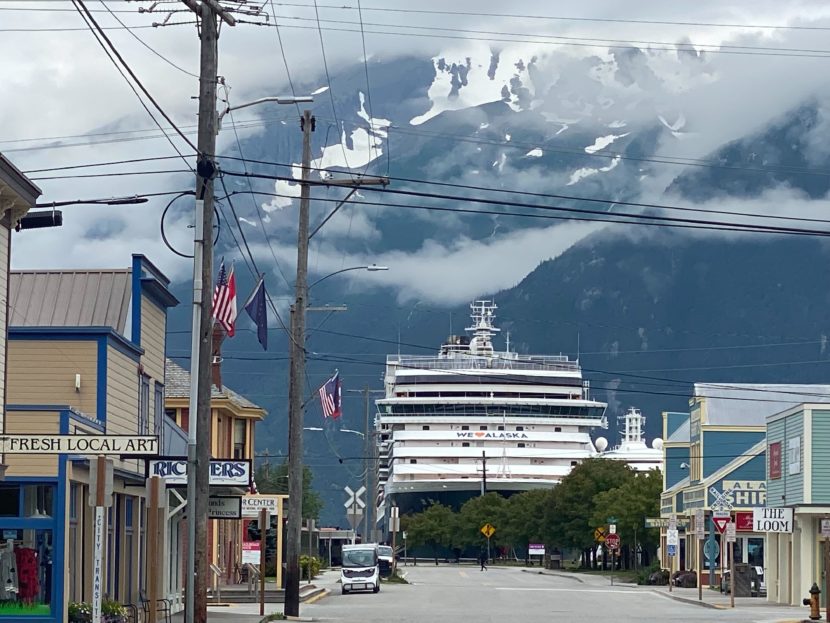The Alaska Department of Labor and Workforce Development is predicting a strong 2023 tourist season, with more than a million visitors expected to land on the state’s shores and runways.
Projections from the Alaska Cruise Association indicate a promising tourist season is ahead. The association is expecting 1.6 million passengers to come to Alaska via cruise ships.
Karinne Wiebold, an economist with the state Department of Labor and Workforce Development, said the increased numbers are a good sign. That’s higher than we have seen in the past, Wiebold said.
The cruise industry is the way most visitors get to Alaska.
According to a new report from the Department of Labor and Workforce Development, 53% of visitors arrive via cruise ship — many of whom then travel through areas such as the Southeast and into Interior Alaska.
The report says 51% of Denali National Park & Preserve visitors and 41% of Fairbanks visitors also arrive from cruise ships and travel to their destinations via land tour extensions such as the Alaska Railroad.
Approximately 20% of all cruise ship passengers make their way to Interior Alaska, spreading the economic benefits of tourism. Just 43% of visitors to Alaska arrive by plane.
Wiebold said Alaska has been seeing cruise ships arriving earlier each year. The first ship of 2023 is expected to dock on April 17.
Docks will continue to see ships cruising until Oct. 27, when the last ship is expected to leave.
The number of visitors is expected to peak during the months of June and July.
That’s the busiest time Wiebold said.
A busy and packed visitor season will help rebuild the industry that is one of Alaska’s economic backbones.
The tourist season, the state said, plays an important role to the statewide economy.
The state lost $98.8 million in revenue in 2020 when no ships docked for the season — impacting thousands across the state who rely on that income.
Wiebold warns that the worker shortage seen in Alaska and nationally could create struggles to fill those jobs. Summer is when Alaska sees the highest demand for additional workers.
In popular tourist destinations such as Skagway and Denali, the workforce is made up of 67% non-resident workers in a typical year.
In Ketchikan, one in four workers are non-residents and in Juneau, one in five.
Tourism in Alaska still has not bounced back to pre-pandemic numbers, according to experts. In 2019 — which is considered the last normal cruise year — 1.3 million passengers arrived by cruise ships in the state.
In 2021, the state was expecting to welcome 1.5 million cruise ship passengers but only saw 1.15 million passengers.
Last year they were coming in about 75% full when they averaged out the season, Wiebold said.
Despite that, economists are predicting a strong visitor season this year.
Restrictions are pretty much over, at this point. People’s confidence and desire to travel have nationally been reported very high, Wiebold said.
Weibold said the one factor that could damper that prediction is a recession.
People who would be planning travel — especially more of the lower cost cruise travel — might reconsider that and do something consider something closer to home, Wiebold said.
Wiebold said she is not expecting that to occur, but the thought of it is there.
No, they are not expecting a recession. But it certainly is a possibility it could happen, she said.
Tags: Alaska Cruise Association, Alaska Railroad, Karinne Wiebold, Cruise Industry, Alaska Department of Labor and Workforce Development, cruise ship, cruise travel, Tourism in Alaska
